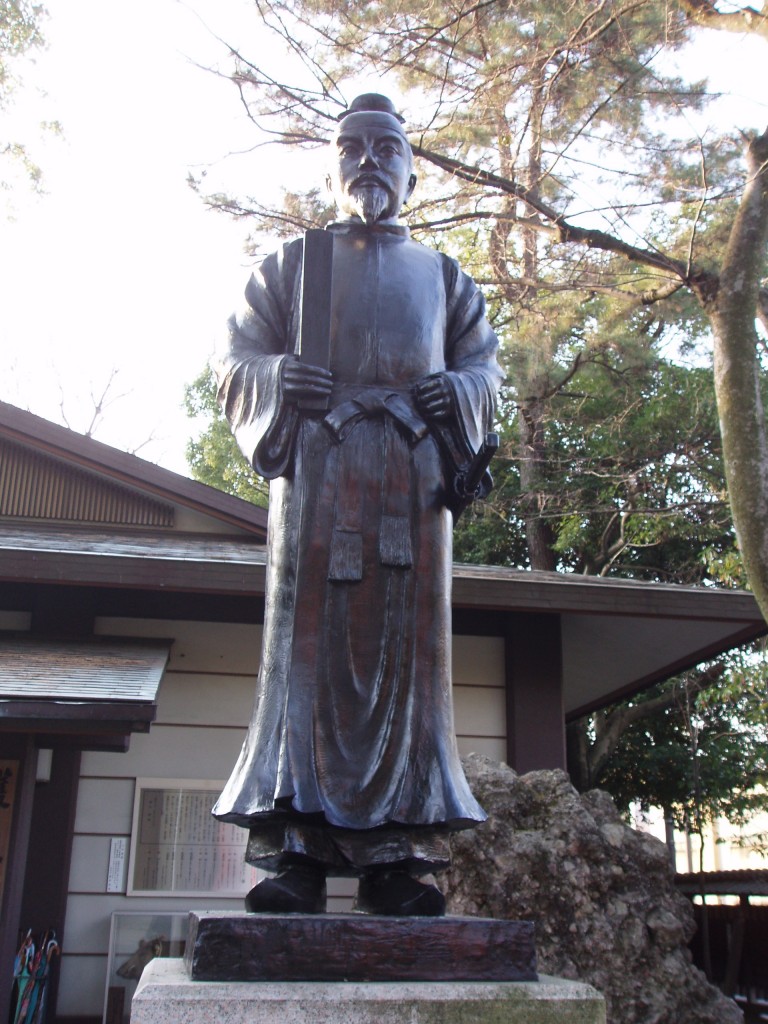
Wake no Kiyomaro (733-799) at Go-o Jinja in Kyoto, still guarding the Yamato legacy
Recently on my visits to Kyoto shrines I’ve been to a shrine dedicated to a clan founder (Awata Jinja) and one to a Yamato leader who became a kami of pottery (Toki Jinja, aka Wakamiya Hachiman-gu). Now I’d like to look at Go-o Jinja (or Goh Jinja), next to the Former Imperial Palace. All three shrines celebrate the spirits of dead people, emphasising just how much Shinto, within Japan at least, is more ancestral than animist.
Goh Shrine enshrines the spirit of Wake no Kiyomaro (733-799), a government official in the 7th Century. Amazingly, he’s got his own Facebook page, where one learns that his birthplace of Wake was in Okayama Prefecture and that he hailed from a family of influential Buddhists. He became a close advisor of Emperor Kammu, and some even credit him with the decision to relocate the capital from Nagaoka-kyo to Heian-kyo (present day Kyoto).
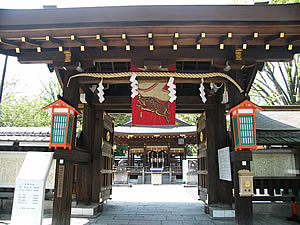
Entrance to the shrine from the east, facing Gosho (the Former Imperial Palace)
However, Kiyomaro’s enshrinement owes itself to the notorious Dokyo Incident in 759, involving ‘the Japanese Rasputin’. Dokyo was a Buddhist priest much favoured by Empress Koken (later Empress Shotoku), whom he cured of illness. Such was Dokyo’s hold over her that he harboured political ambitions of his own and somehow contrived for the female oracle at the prestigious Usa Hachiman Shrine to proclaim that he should be the next emperor. You can imagine the consternation at court! He was, after all, a commoner and not even a member of the imperial family. What exactly was his relationship with the empress?
The trusty Wake no Kiyomaro was sent to Usa to check whether the oracle could possibly be genuine, and he returned with the desired answer – a second oracle proclaimed that only descendants of Amaterasu could become Emperor. The first one was clearly mistaken. According to Facebook/Wikipedia, “This report angered Dōkyō, who used his influence with the Empress to have an edict issued sending Kiyomaro into exile; he also had the sinews of Kiyomaro’s legs cut, and only the protection of the Fujiwara clan saved him from being killed outright.”
The shrine gives a slightly different version, however, namely that on the way into exile he was ambushed by Dokyo’s men and wounded in the leg. Moreover, some 300 wild boar appeared out of nowhere and helped him get 40 kilometers away from Usa Hachiman, where his leg was miraculously healed. The boar is consequently Kiyomaro’s tsukai (familiar/servant), and as a kami he is venerated for recovery from illness, safe journeys and a life free of mishaps. The shrine is particularly associated with the health of legs (see here for an example.)
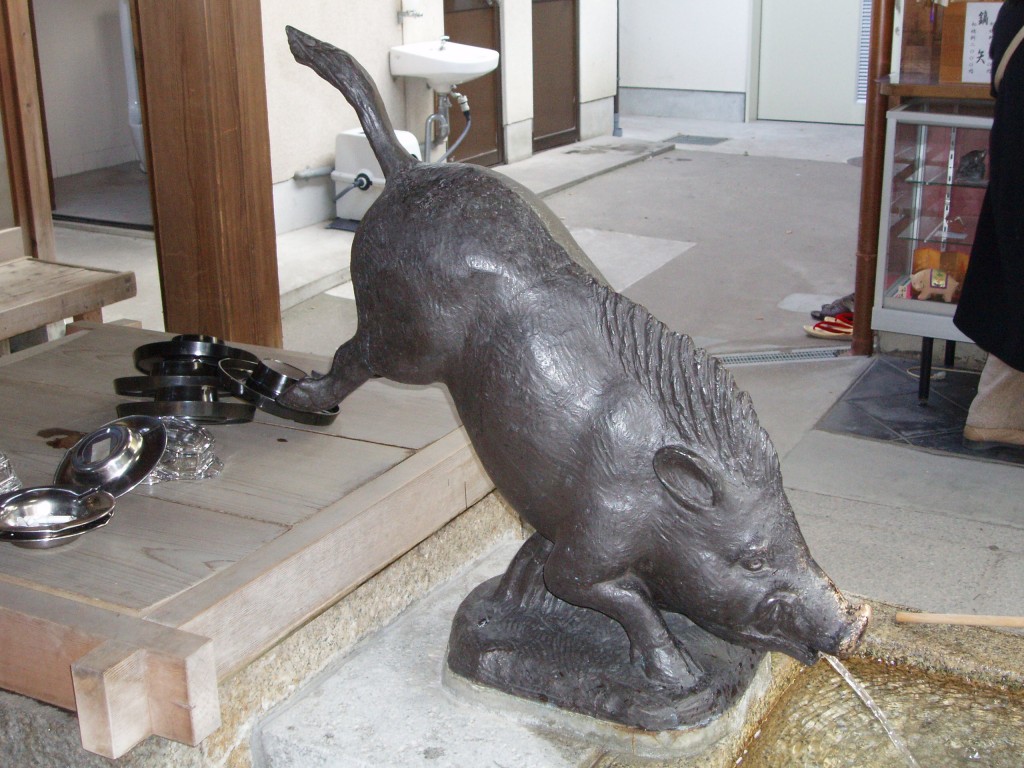
A boar water basin, in tribute to the animal that rescued Kiyomaro when he was injured
With the death of Empress Shotoku, Dokyo fell out of favour and Kiyomaro was recalled. One of his first actions was to instigate investigation of the Usa oracles. Two were found to be fraudulent, and the authorities responsible sacked. And what of Dokyo? He was placed under house arrest, then banished from court to Tochigi prefecture, at a time when having to live in the provinces away from the glittering centre was considered akin to solitary confinement.
The lessons learnt by the court were to have no more empresses and to move away from the overbearing influence of the Buddhists in Nara. in 794, when Emperor Kammu founded Kyoto, he only allowed two temples, To-ji (East Temple) and Sai-ji (West Temple), located away from the court near the city’s entrance gate of Rashomon.
So Wake no Kiyomaro at great personal danger saved the world’s longest-living ruling dynasty when it was but in its infancy. No wonder he’s an imperial hero, who was rewarded with posthumous glory after the emperor was restored to power in 1868. His shrine was relocated from Jingo-ji to be beside the Former Imperial Palace and he was honoured with his portrait on the 10-yen note. For loyalists, in a very real sense his spirit lives on…
******************************************************************************************************************
For some stunning photos of Goh Shrine, see Ojisan Jake’s page.
******************************************************************************************************************
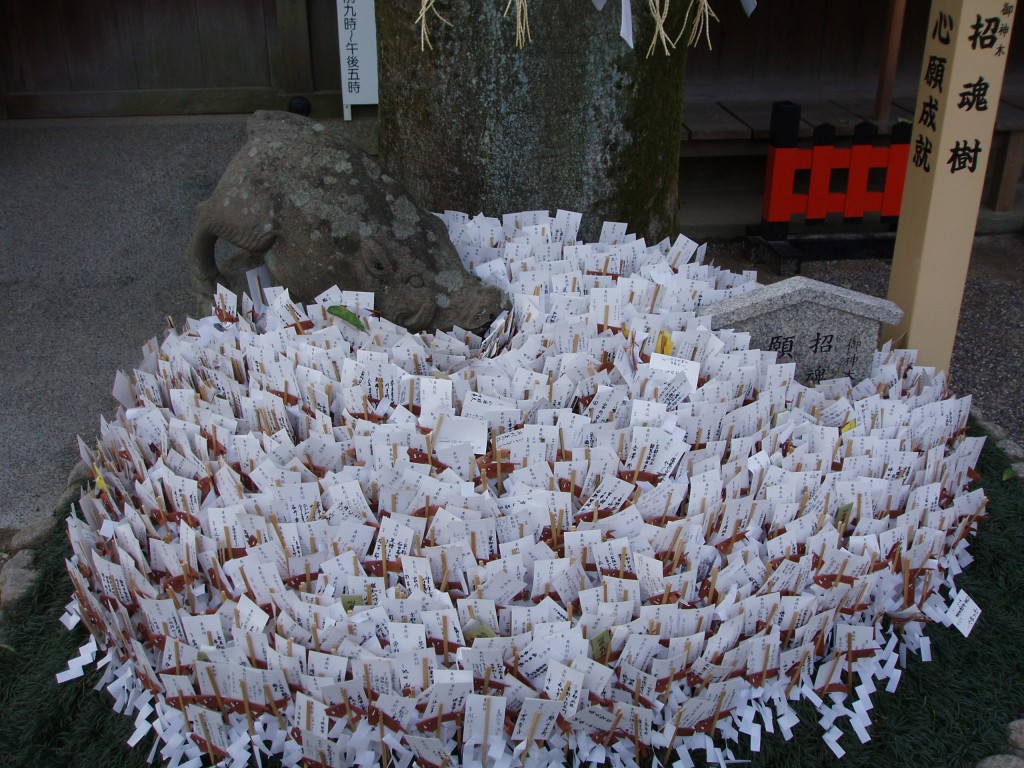
A collection of prayer sticks around a boar's head rock
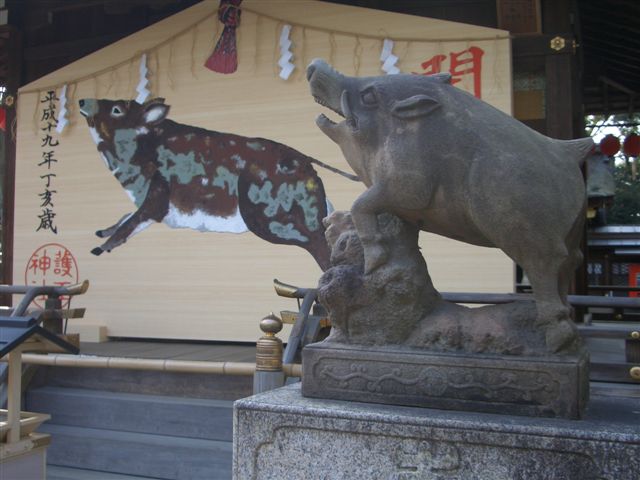
The shrine is particularly popular in the year of the boar (next one in 2019)

Leave a Reply